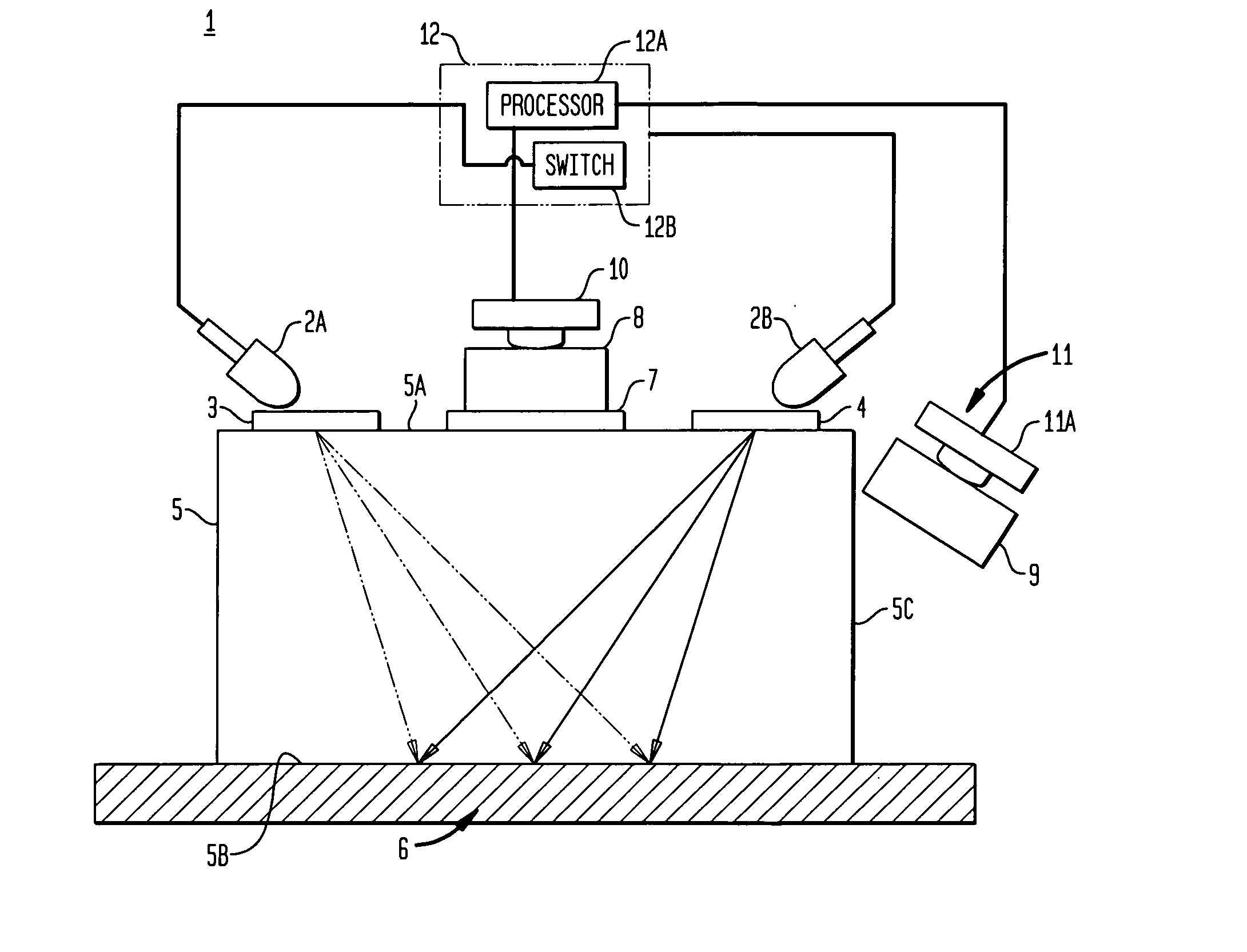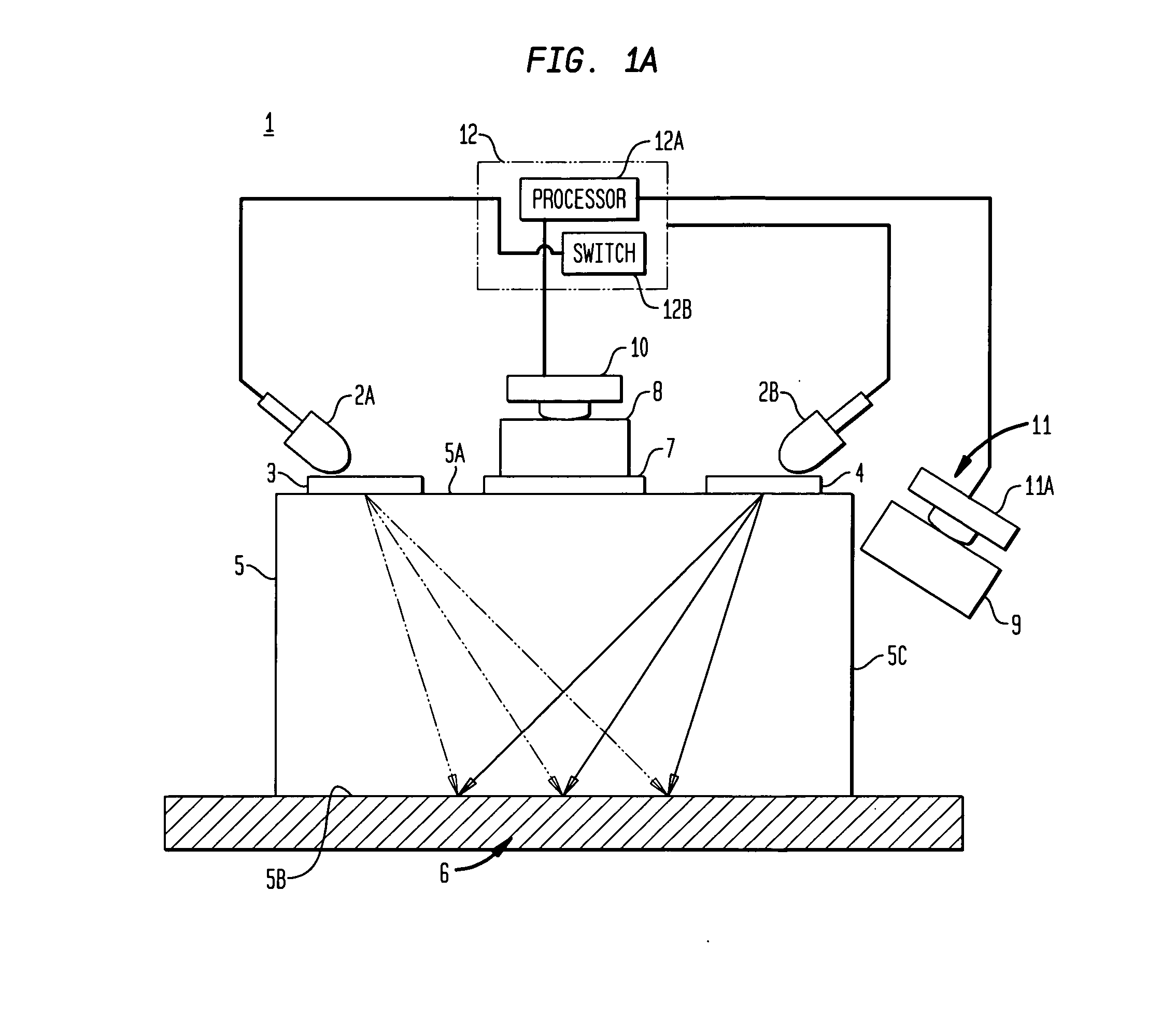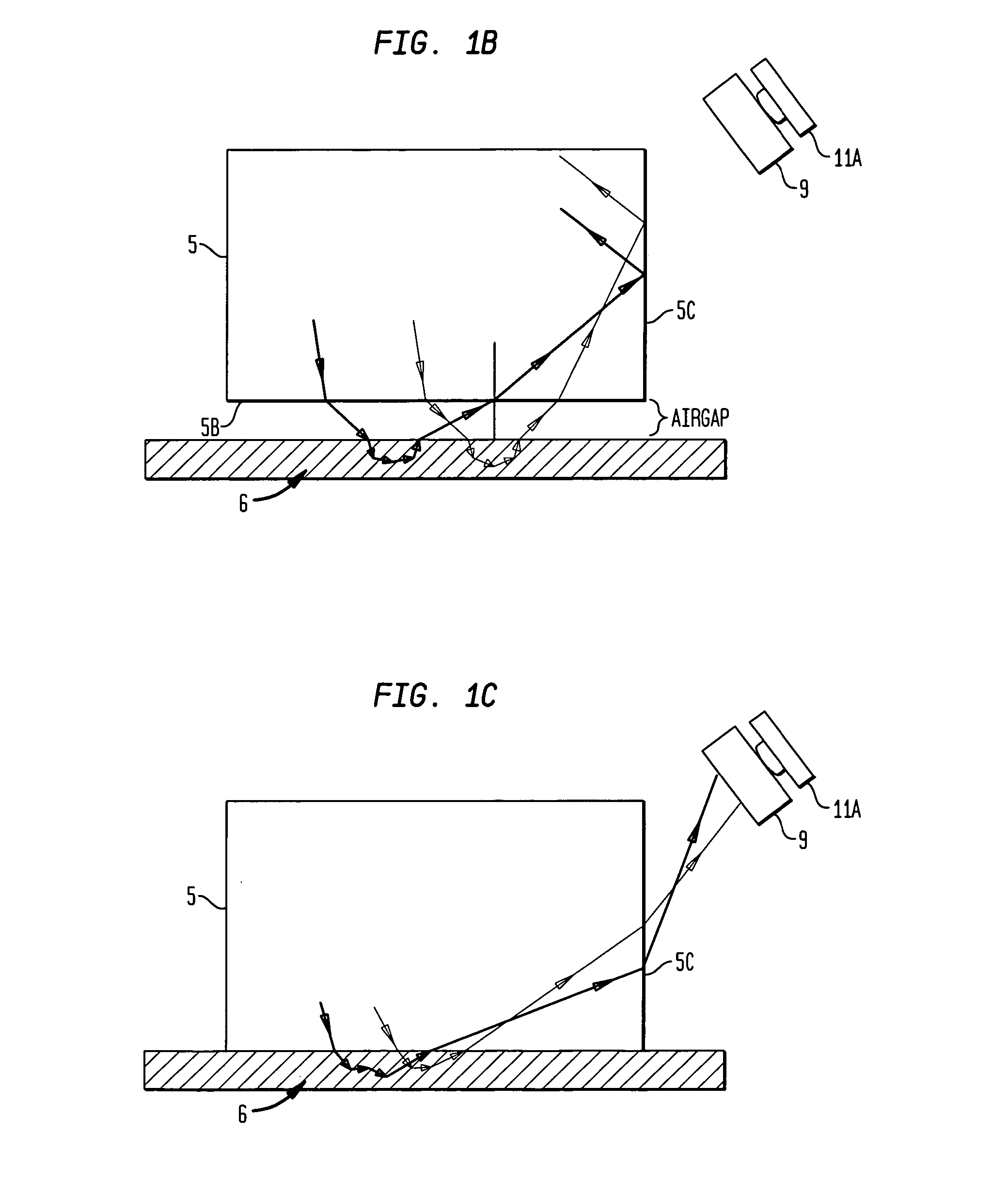Skin optical characterization device
a skin optical and characterization technology, applied in the field of dermatological devices and methods, can solve the problems of ineffective treatment, conventional skin typing methods that do not take into account variations, and the general use of skin typing methods that are not based on actual measurements of chromophores, etc., and achieve the effect of reducing ambient radiation and reducing radiation
- Summary
- Abstract
- Description
- Claims
- Application Information
AI Technical Summary
Benefits of technology
Problems solved by technology
Method used
Image
Examples
Embodiment Construction
[0051] The present invention relates generally to diagnostic and / or therapeutic dermatological and other devices, as well as diagnostic and therapeutic methods, that determine one or more characteristics of the skin by analyzing radiation scattered by the skin in response to its illumination at least one wavelength, and more preferably, at two or more wavelengths. In other aspects, the invention provides optical sensors for determining whether an optical element, such as a waveguide or treatment window through which radiation from a device is transmitted to the skin, is in contact with the skin.
[0052]FIG. 1A schematically depicts a cross-sectional view of an exemplary dermatological device 1 in accordance with one embodiment of the invention that measures a physical property of tissue, the melanin optical density (“MOD”) of human skin in this particular embodiment. Device 1 includes two light sources 2A and 2B that generate radiation having different wavelengths selected to be suff...
PUM
 Login to View More
Login to View More Abstract
Description
Claims
Application Information
 Login to View More
Login to View More - R&D
- Intellectual Property
- Life Sciences
- Materials
- Tech Scout
- Unparalleled Data Quality
- Higher Quality Content
- 60% Fewer Hallucinations
Browse by: Latest US Patents, China's latest patents, Technical Efficacy Thesaurus, Application Domain, Technology Topic, Popular Technical Reports.
© 2025 PatSnap. All rights reserved.Legal|Privacy policy|Modern Slavery Act Transparency Statement|Sitemap|About US| Contact US: help@patsnap.com



